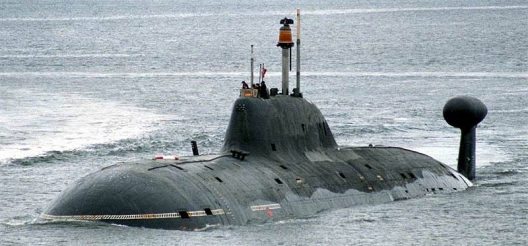 Russia’s military has taken on an aggressive swagger. Highly provocative run-ins are now common with neighbors and NATO nations alike. In the Black Sea, NATO ships like the U.S. destroyer Donald Cook have been buzzed by Russian fighters. Russian Tu-95 Bear bombers have reportedly been tracked near Canada conducting missile strike drills within range of targets in the United States, and Russian airplanes have been tracked as close as 50 miles from the California coast – the closest they’ve come since the end of the Cold War. . . .
Russia’s military has taken on an aggressive swagger. Highly provocative run-ins are now common with neighbors and NATO nations alike. In the Black Sea, NATO ships like the U.S. destroyer Donald Cook have been buzzed by Russian fighters. Russian Tu-95 Bear bombers have reportedly been tracked near Canada conducting missile strike drills within range of targets in the United States, and Russian airplanes have been tracked as close as 50 miles from the California coast – the closest they’ve come since the end of the Cold War. . . .
“Who would have thought on Jan. 1, 2014, we’d have an annexed Crimea, a civil war fostered, fueled and nurtured in Eastern Ukraine, and a very different relationship with a Russia that for the last 20 years has been seen as an economic partner?” said Royal Navy Vice Adm. Peter Hudson, head of the NATO maritime mission in an October interview. . . .
Hudson, the Royal Navy admiral, said these incidents on the high seas have become almost routine for NATO sailors, including those with the U.S. Navy.
“On the back of Ukraine they are more assertive in their behavior,” Hudson said. “We’ve seen the instances in the Black Sea flying aircraft at NATO ships; their surface ships have [been] interfering with NATO operations in the Baltic Sea, shadowing and intelligence collection. We’ve seen a more assertive posture over the past 12 months, behavior we haven’t seen for 25 to 30 years [since] the Cold War.”
Hudson said Russian ships have even resorted to unprofessional tactics that can been seen as petty or just down-right aggravating.
“In the Baltic and the Black Sea, we see a couple of Russian small warships fouling gunnery ranges,” he said. “You know you have to announce on the radio that you’re conducting gunnery exercises to make sure fishermen and yachts are safe, so they deliberately park themselves in the box to foul gunnery ranges. They’ve gotten inside safety when we’ve conducted diving operations, etc.”
“These sorts of things are irritating, mischievous. They are nuisance factors [and] they are overly aggressive in some respects. And this is the renewed Russian way of asserting its authority. . . .”
There is serious work with alllies in Europe to rebuild high-level capabilities that may have eroded during the past two decades, said Thomas Fedyszyn, a Russia expert at the Naval War College who commanded a U.S. cruiser during the Cold War.”For about 20 years we’ve had forces with NATO, but we don’t do high-level warfare like [anti-submarine warfare, anti-air warfare],” Fedyszyn said. “Now we fight piracy and immigration and counter criminality.”
Fedyszyn said that sailors should be ready for more face-to-face encounters with a sophisticated adversary.
“Sailors deploying can increasingly expect meeting up with Russian ships,” he said in an October phone interview. “Do expect those cold war confrontations, and be ready for them. Also expect to be training for higher level operations. You might be doing some serious AAW or ASW. When your helo lifts off, it won’t be looking for pirates or drugs — it may be looking for other warships. . . .”
Military leaders and defense experts are cautioning that renewed Russian aggression isn’t going anywhere as the U.S. military tries to recalibrate its presence. They expect the tensions will make 6th Fleet missions to track Russian forces as common as, say, counter-drug deployments have been for Mayport, Florida, ships or oil platform defense missions once were for U.S. ships in the Persian Gulf.
The U.S. needs to steel itself for a long period of tensions and confrontation with Russia, said retired Adm. James Stavridis, the former NATO supreme allied commander Europe and current dean of The Fletcher School at Tufts University in Massachusetts.
“I think we are in a new normal, and the new normal is bad,” Stavridis said in a Nov. 25 interview. “The new normal is not quite the cold war … we’re not quite there. But the new normal will be an aggressive, revanchist Russia that seeks to reconstruct a Warsaw Pact-lite around its borders. … I think it is probably the most significant strategic shift that is underway in the world today. . . .”
Stavridis agreed, saying that ultimately Putin is hurting his country by damaging its economic ties with Western Europe and the United States.
“What I think you are seeing is a Putin who is tactically very successful: by undertaking an annexation of Crimea; a destabilization of Ukraine; a destabilization of Moldova; by sending ships into the Caribbean; sending out long-range bombers. Where is he successful? He’s successful in Russia. That’s the audience for those activities. He is banging the drum of Russian nationalism louder than we’ve seen it in 50 years.”
“Those tactics help him immeasurably at home to maintain control and to feed the fires of Russian nationalism. He’s going to be tactically successful in those regards. He’s going to be a strategic failure.”
Image: Russian Akula class submarine, June 3, 2008 (photo: Visergey)
